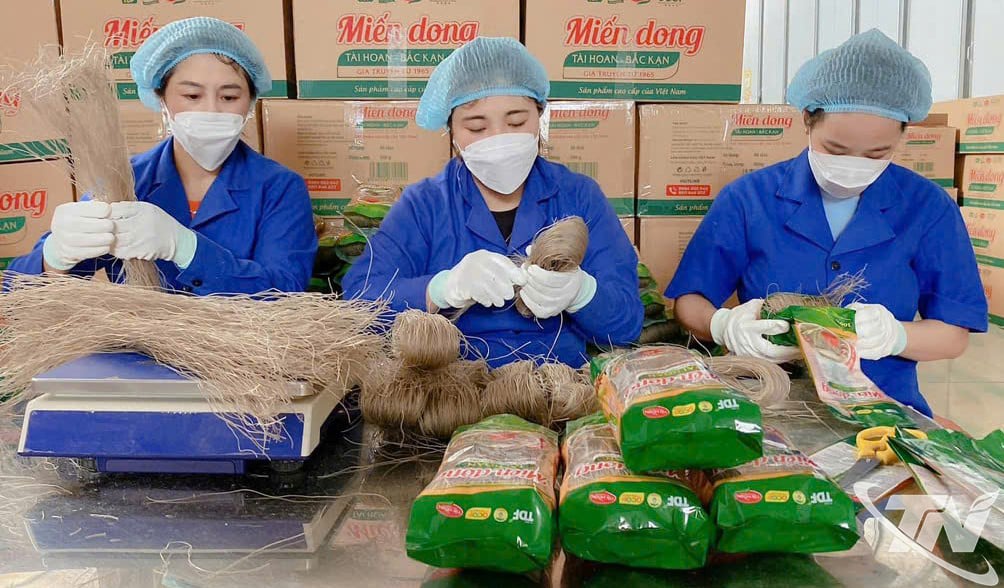 |
| The vermicelli making profession brings in more than 50 billion VND/year to the ethnic people of Con Minh commune. |
Taking advantage of the State's support capital and promoting the internal strength of the people, Kunming commune is improving day by day. New houses have replaced temporary houses; many poor households have motorbikes as a means of transportation; 100% of villages have built concrete roads. The number of poor households has decreased rapidly, from 602 households in 2021 to 398 households in 2024. Notably, 96 poor households have had their dilapidated houses eliminated in 2025.
From mastering science and technology in agricultural production, the land of Con Minh commune is rotated, season after season, bringing prosperity to the land owner. Mr. Trinh Duc Minh, Chairman of the Commune People's Committee, proudly said: The merger of 3 communes: Quang Phong, Duong Son and Con Minh has opened up many new development opportunities for Con Minh commune today. Currently, the whole commune has 18 villages, with more than 1,500 households and over 6,600 people.
Cadres and people in the commune have a tradition of solidarity and democracy; cadres and party members have innovative thinking; backward farming practices among the people are replaced by applying science and technology to intensive production, increasing crops, creating concentrated commodity areas, thereby increasing the value of agricultural products of the people.
The market economy has changed the farming mindset of ethnic minorities. Instead of the previous concept of "enough to eat, enough to spend", people now tend to concentrate on production, increase crops, and introduce new crop varieties to most of the area. Currently, new rice varieties such as Nep 97, J2, Khau nua lech, Thien uu 8, Dai thom... New corn varieties such as CP511, NK 4300, AG 59, HN88... are being planted and grown on most of the area. The average rice yield is 51 quintals/ha; the average corn yield is 49 quintals/ha. Food production reaches more than 4,700 tons/year.
Food security is guaranteed, averaging 713 kg/person/year. However, to improve their material life, people in the village have actively converted mixed garden crops to crops that bring high economic value.
In the past 5 years, the commune has planted more than 56 hectares of fruit trees of all kinds, mainly oranges and tangerines. In particular, the arrowroot tree is given priority for development, maintaining an area of nearly 73 hectares every year. When asked about family economic development, many people joked: In the past, when the family had an event, they had to sell rice and corn to have money to take care of it. Now, selling arrowroot roots dug from the ground and ripe fruits on the tree gives them money to go to funerals, weddings, and pay for their children's school fees.
Sharing with us, Mr. Loc Van Thang, Ban Cao village said: The arrowroot plant is suitable for Kunming soil, just need to put the roots in the ground and they will grow into clumps, giving high yield, but only to eat for fun. But that was a story of decades ago, because now the arrowroot plant has become a "symbol" in Kunming like the tea plant in Xinjiang.
Ms. Hoang Thi Dong, Ban Cuon village shared: Thanks to the lowland people who came to do the new economy, they brought the vermicelli making profession with them, and then popularized it to the local people to do the same. For about 30 years now, the arrowroot plant has become a hot topic from home to street. Everyone is happy because the arrowroot root, after being processed, has been upgraded to a specialty.
Mixed garden hills and fields with poor water conditions have been replaced by arrowroot plants. Most of them are found in the villages of Tan Lap, Ban Cuon and Ban Cao. In the commune, there are currently 2 cooperatives and 49 households specializing in the production of arrowroot vermicelli.
Through discussion, Mrs. Loc Thi Do, Ban Cuon village, said: Thanks to the support of machines in stages such as washing tubers, grinding flour, stirring flour, making rice paper, etc., our vermicelli villagers have less hardship. However, the traditional manual rice paper making stage on a wood fire still produces the best vermicelli products.
Cellophane noodles are a key commodity of Kunming. Currently, there are dozens of establishments processing cassava starch and producing cellophane noodles in the area. In recent years, Kunming commune has supplied more than 1,000 tons of cellophane noodles per year to domestic and foreign markets, and is highly appreciated by consumers for its quality. Typically, the cellophane noodles of Tai Hoan Cooperative are recognized as a national 5-star OCOP product.
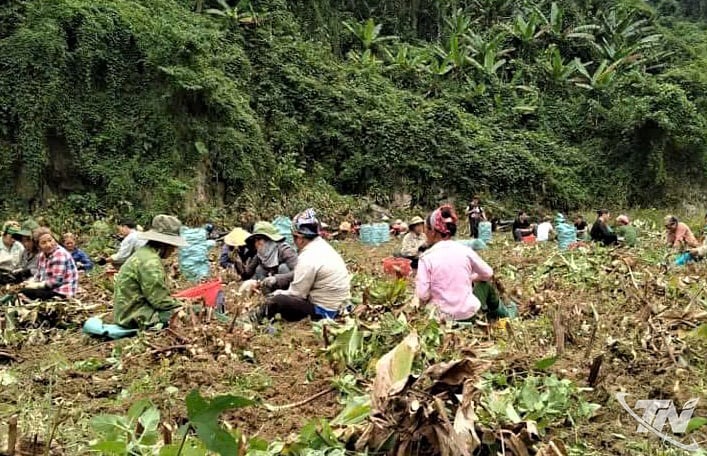 |
| Ethnic people of Con Minh commune help each other harvest arrowroot tubers. |
Along with the two main crops of rice and cassava, the commune also has 6 forest product processing establishments; 2 construction material trading establishments; 5 small-scale mechanical workshops; 15 food processing establishments. Notably, there is a model of farm raising with a scale of 1,500 sows and pigs. Production establishments, cooperatives and farms operate effectively, hundreds of workers in the area have jobs with a stable income of 4 to more than 10 million VND/person/month.
Traveling on the roads of Ka Doong - Hin Tooc; Na Va - Tham Khong; Na Lay - Khuoi Cang and the internal roads of Na Dan, Na Ca, Na Buoc villages... In addition to the classic examples of local production and business, we also heard stories about bright examples in participating in the implementation of new rural construction, typically the family of Mr. Hoang Van Phya; the family of Mr. Duong Van Dai, the family of Mr. Luong Van Son... in Quang Vinh village; the family of Mr. Hac Van Nhai, Na Buoc village and many families were awarded Certificates of Merit by the provincial leaders.
The time in Kunming was not long, but the stories about the generation of young cadres, party members today and the new farmers we heard were very touching. On the way back, I thought to myself: Kunming commune has just gone through a "gestation" period to confidently enter a new stage of development.
Source: https://baothainguyen.vn/kinh-te/202511/con-minh-mua-noi-mua-4da3089/



![[Photo] Prime Minister Pham Minh Chinh attends a conference to review one year of deploying forces to participate in protecting security and order at the grassroots level.](https://vphoto.vietnam.vn/thumb/1200x675/vietnam/resource/IMAGE/2025/11/12/1762957553775_dsc-2379-jpg.webp)
![[Photo] Highways passing through Dong Nai](https://vphoto.vietnam.vn/thumb/1200x675/vietnam/resource/IMAGE/2025/11/12/1762940149627_ndo_br_1-resize-5756-jpg.webp)



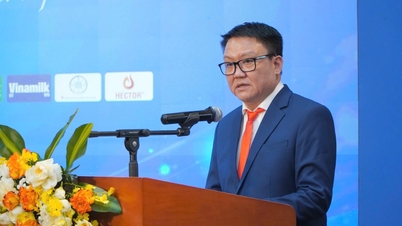









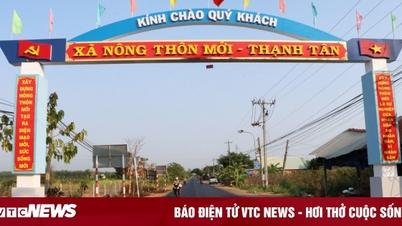




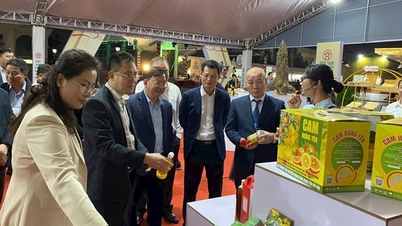

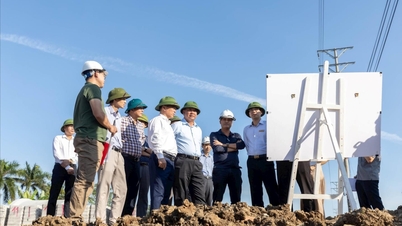









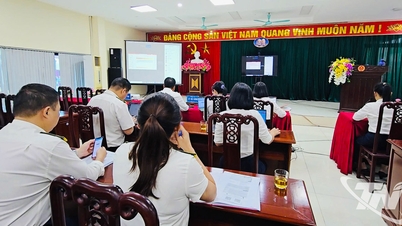











































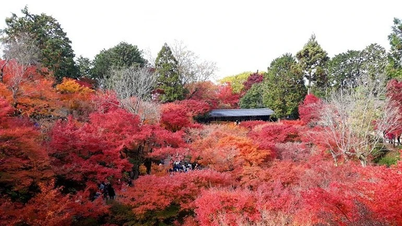









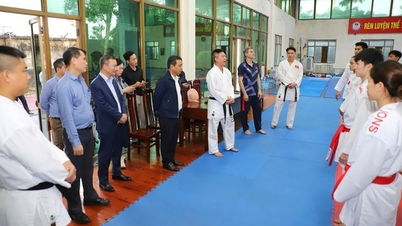





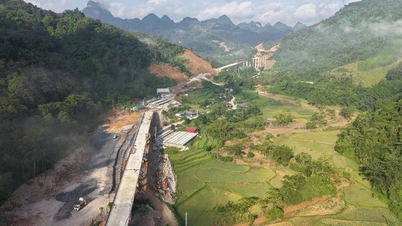
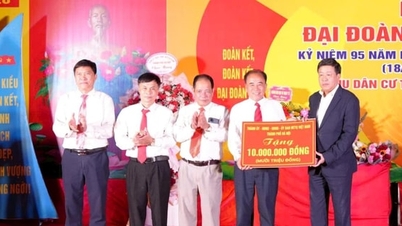






![Dong Nai OCOP transition: [Article 3] Linking tourism with OCOP product consumption](https://vphoto.vietnam.vn/thumb/402x226/vietnam/resource/IMAGE/2025/11/10/1762739199309_1324-2740-7_n-162543_981.jpeg)


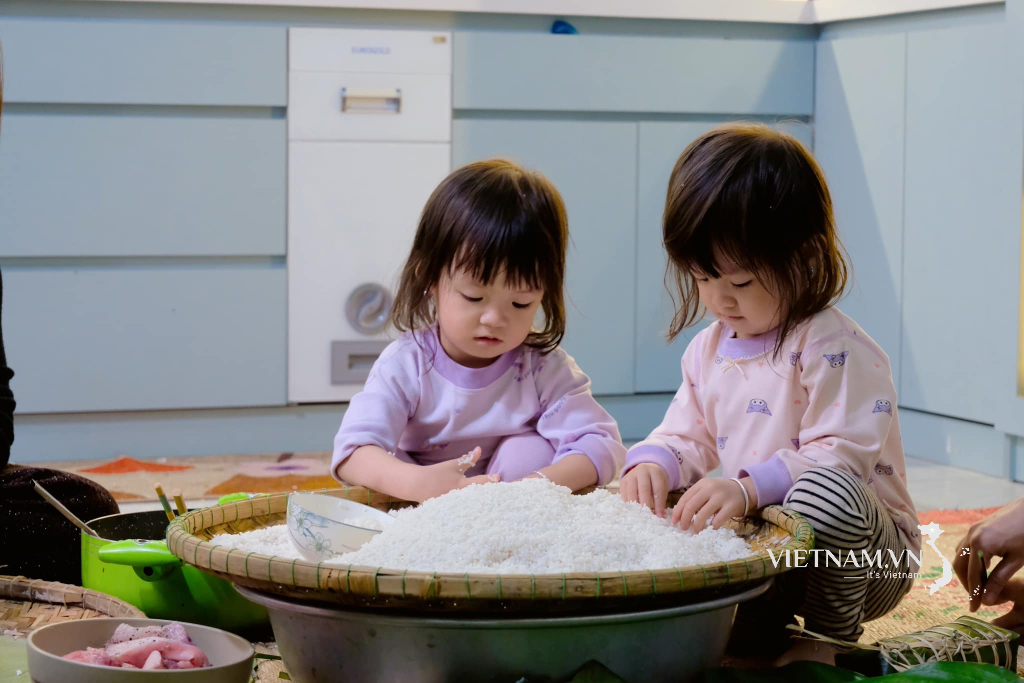



Comment (0)